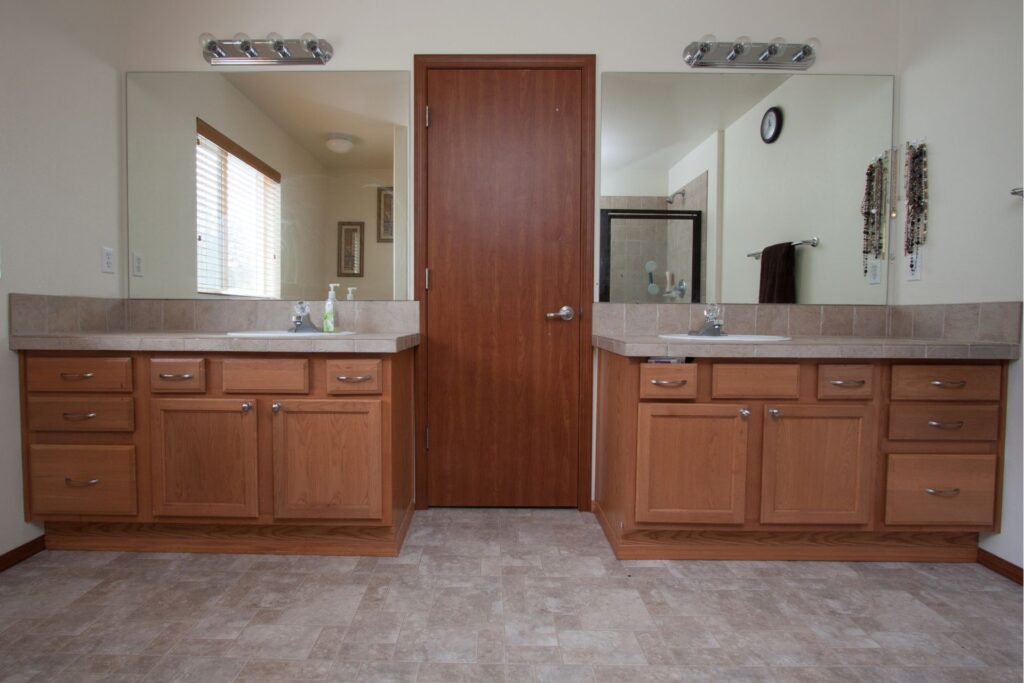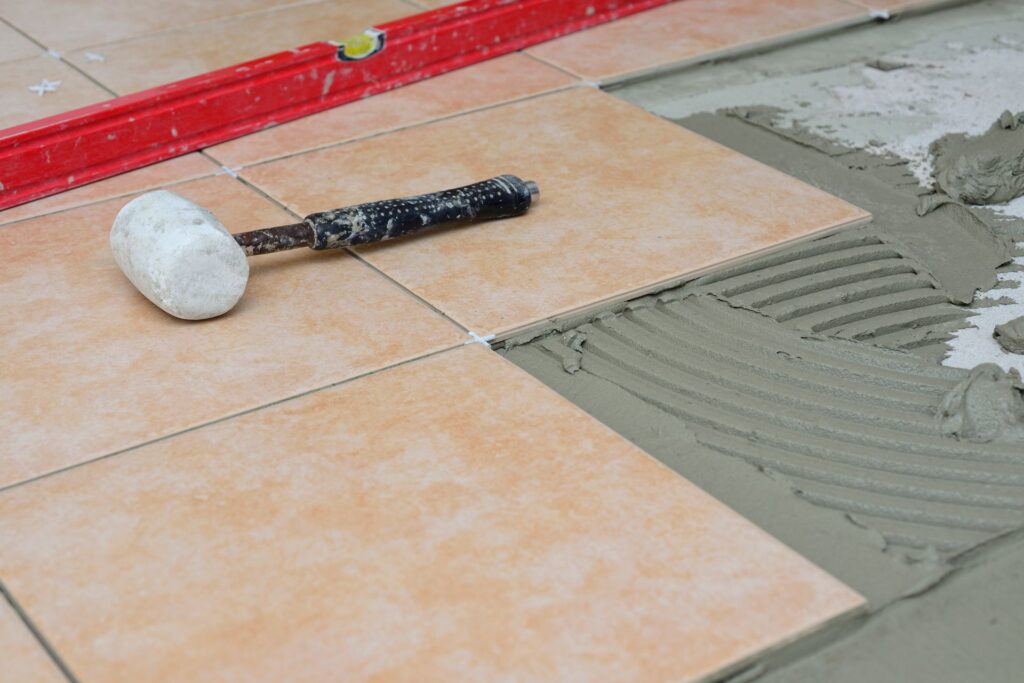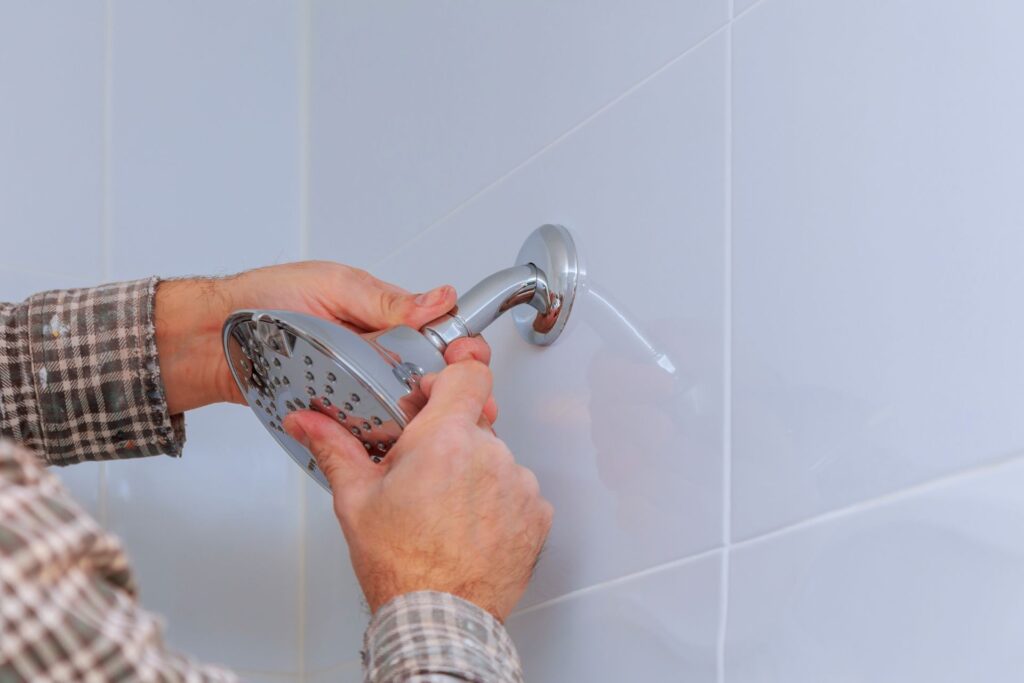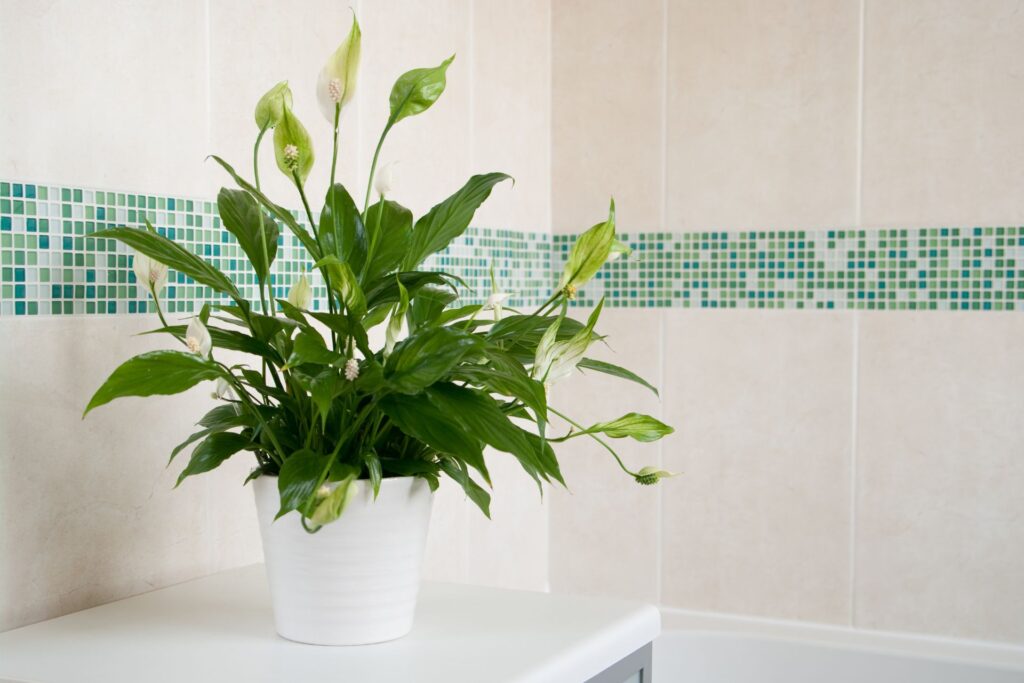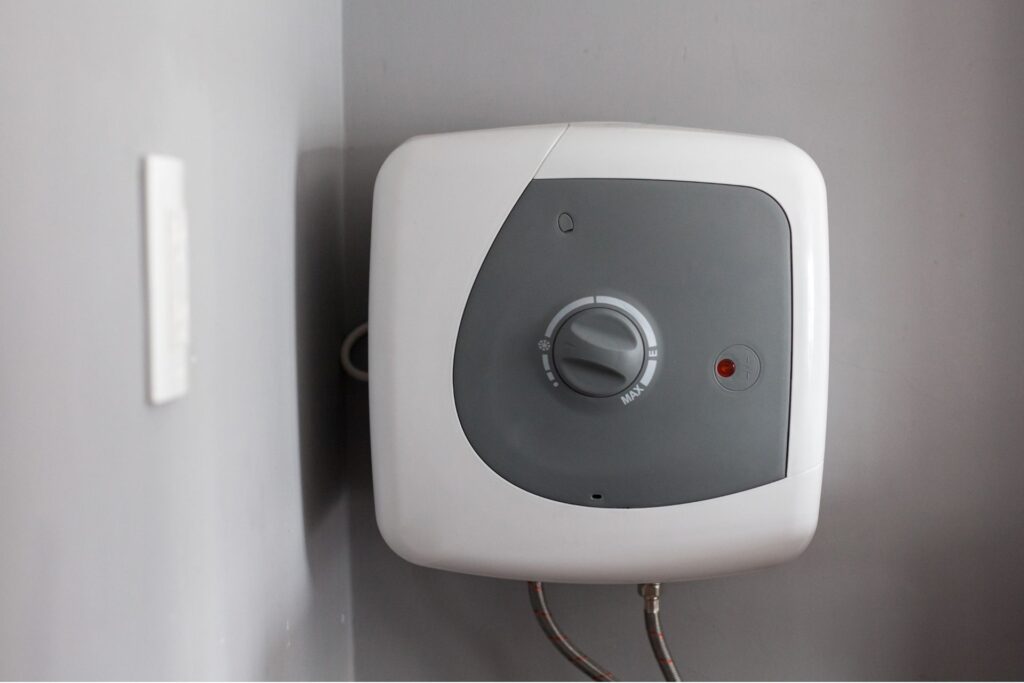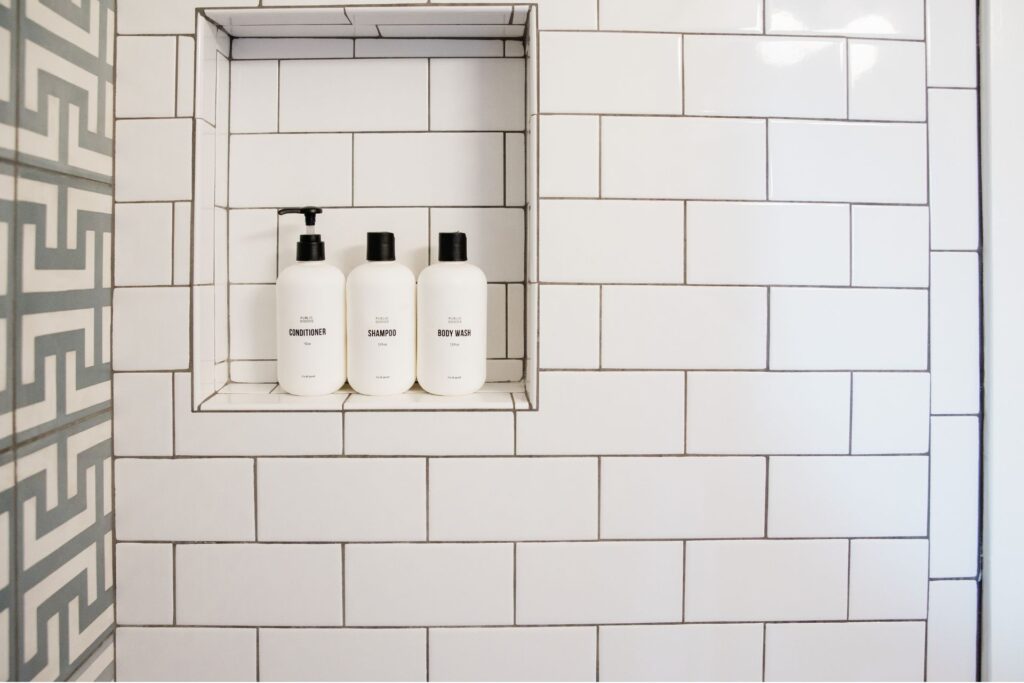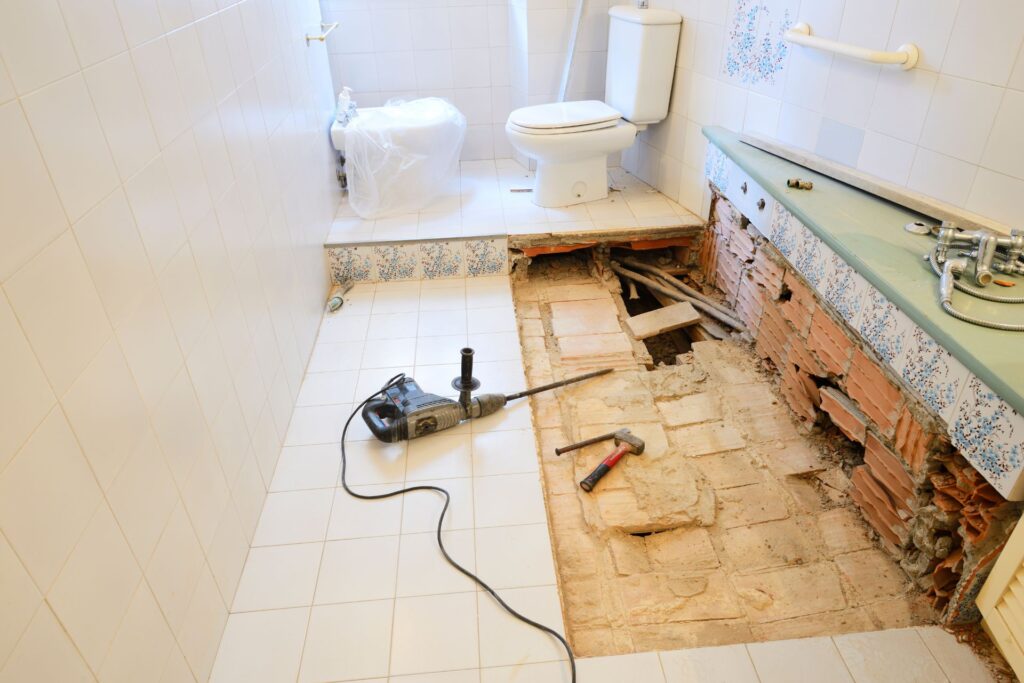Welcome to our detailed guide on the average cost to install a bathroom vanity in New Zealand. Whether you’re renovating your bathroom or simply looking to update its style and functionality, a new vanity can make a significant impact. In this post, we’ll delve into the various costs associated with vanity installation, from the choice of materials to labor expenses. We’ll also explore the different types of vanities available and the benefits they can offer to your home. By the end of this guide, you’ll have a clear understanding of what to expect in terms of investment and how to make informed decisions for your bathroom renovation.
On average, installing a bathroom vanity in New Zealand costs between NZD $500 and NZD $3,000. This range includes both the vanity itself and professional installation, with labor rates typically running from NZD $50 to $100 per hour. Factors influencing cost include the type of vanity, materials used, and the complexity of the installation process. By carefully selecting the size, style, and materials of your vanity, you can significantly enhance the functionality and aesthetic appeal of your bathroom while adhering to your budget.
Table of Contents
Understanding Bathroom Vanity Installation
Bathroom vanities play a crucial role in both the functionality and aesthetics of your bathroom. Whether you’re renovating or simply upgrading your space, installing a new vanity can be a transformative experience. Let’s dive into the essentials of bathroom vanity installation, exploring what a bathroom vanity is, the different types available, and the benefits of installing a new one.
What is a Bathroom Vanity?
A bathroom vanity is more than just a place to wash your hands; it’s the centerpiece of your bathroom that combines a sink, countertop, and storage. Typically, a vanity also includes cabinets or drawers, offering much-needed storage for toiletries, cleaning supplies, and other bathroom essentials. In New Zealand, bathroom vanities are commonly made from durable materials like wood, MDF (Medium Density Fiberboard), or PVC, with countertops crafted from stone, ceramic, or laminate. The style of the vanity can significantly influence the overall look of the bathroom, ranging from modern, minimalist designs to more traditional, ornate options.
Types of Bathroom Vanities
When it comes to choosing a bathroom vanity, understanding the different types available is crucial. The two main categories are freestanding and built-in models.
- Freestanding Vanities: These are versatile and can be installed in almost any bathroom layout. They stand independently, making them easier to install and relocate. Freestanding vanities are ideal for smaller bathrooms or spaces where flexibility is key. They come in a variety of styles, from sleek modern units to more rustic, traditional designs.
- Built-in Vanities: These are more permanent fixtures that are custom-fitted to your bathroom. Built-in vanities offer a more seamless and integrated look, often providing more storage space than freestanding models. They are perfect for larger bathrooms where maximizing space and storage is a priority.
Within these categories, vanities can also be distinguished by their components:
- Vanity Cabinets: The base of the vanity, providing essential storage. The style and finish of the cabinets can set the tone for the entire bathroom.
- Countertops: The countertop is the surface area of the vanity, where the sink is usually installed. Countertops can be made from various materials, including quartz, granite, laminate, or solid surface, each offering different benefits in terms of durability and maintenance.
- Integrated Sinks: Some vanities come with an integrated sink, where the sink and countertop are one seamless piece. This option is both stylish and easy to clean, reducing the number of seams where dirt and grime can accumulate.
Benefits of Installing a New Vanity
Investing in a new bathroom vanity is not just about upgrading the look of your bathroom; it comes with several tangible benefits:
- Improved Aesthetics: A new vanity can completely change the look and feel of your bathroom. Whether you opt for a sleek, modern design or a more classic style, the right vanity can enhance your bathroom’s overall aesthetic, creating a more inviting and visually appealing space.
- Enhanced Functionality: Beyond looks, a new vanity can improve the functionality of your bathroom. With better storage solutions, you can keep your bathroom organized and clutter-free. Plus, newer vanities often come with updated features like soft-close drawers, built-in lighting, and water-efficient sinks, making your daily routine more convenient.
- Increased Home Value: A well-designed and properly installed bathroom vanity can add value to your home. Bathrooms are a key selling point for potential buyers, and an updated, stylish vanity can make a significant difference in the marketability and price of your home.
In conclusion, understanding bathroom vanity installation involves more than just picking a design you like. It’s about choosing the right type of vanity that fits your space, meets your functional needs, and enhances the overall value of your home. Whether you’re doing a full renovation or a simple upgrade, selecting the right vanity can make a world of difference.

Factors Influencing Installation Costs
When planning to install a bathroom vanity, it’s essential to understand the various factors that can significantly influence the overall cost. By considering these aspects, you can make informed decisions that align with your budget while achieving the desired aesthetic and functional outcomes.
1. Size and Scope of Vanity
The size and scope of the vanity you choose are primary drivers of installation costs. For instance, a small, single-sink vanity is typically more affordable to install than a larger, double-sink option. The smaller vanity requires less material and less labor, leading to lower overall expenses. On the other hand, a double-sink vanity not only requires more materials but also involves additional labor, particularly in aligning and connecting the plumbing for two sinks. The physical size of the vanity also dictates the complexity of fitting it into your bathroom space, which can impact labor costs if adjustments or customizations are necessary.
2. Material Choices
The materials you select for your vanity also play a crucial role in determining the installation cost. Materials range widely in price, from budget-friendly options like laminate to more luxurious choices like natural stone or solid wood. Laminate, while affordable, may not offer the same durability or aesthetic appeal as stone or wood. However, it is easier and quicker to install, which can reduce labor costs. On the other end of the spectrum, natural stone, such as marble or granite, offers a high-end look and superior durability but comes with higher material costs and often requires more specialized installation techniques, which can drive up the price.
3. Complexity of Installation
The complexity of the installation process itself is another significant factor in the overall cost. A straightforward replacement of an existing vanity with a similar-sized unit is typically less expensive. In contrast, a complete bathroom remodel that involves relocating the vanity, altering the plumbing, or changing the bathroom layout can greatly increase costs. The complexity of the installation may require additional expertise and time, leading to higher labor charges. Additionally, if your bathroom requires custom cabinetry or special configurations, this can further elevate the cost.
4. Plumbing Requirements
Finally, the plumbing requirements of your vanity installation can substantially impact the cost. If your new vanity fits within the existing plumbing setup, installation can be relatively straightforward and less costly. However, if your project involves moving plumbing fixtures, installing new pipes, or upgrading your plumbing system, the cost can rise significantly. New plumbing configurations often require the expertise of a licensed plumber, adding both time and expense to the project.
In conclusion, when budgeting for a new bathroom vanity, it’s essential to consider the size and scope of the vanity, material choices, the complexity of the installation, and any plumbing requirements. By understanding these factors, you can better estimate your overall costs and plan accordingly, ensuring that your bathroom renovation meets both your needs and your budget.
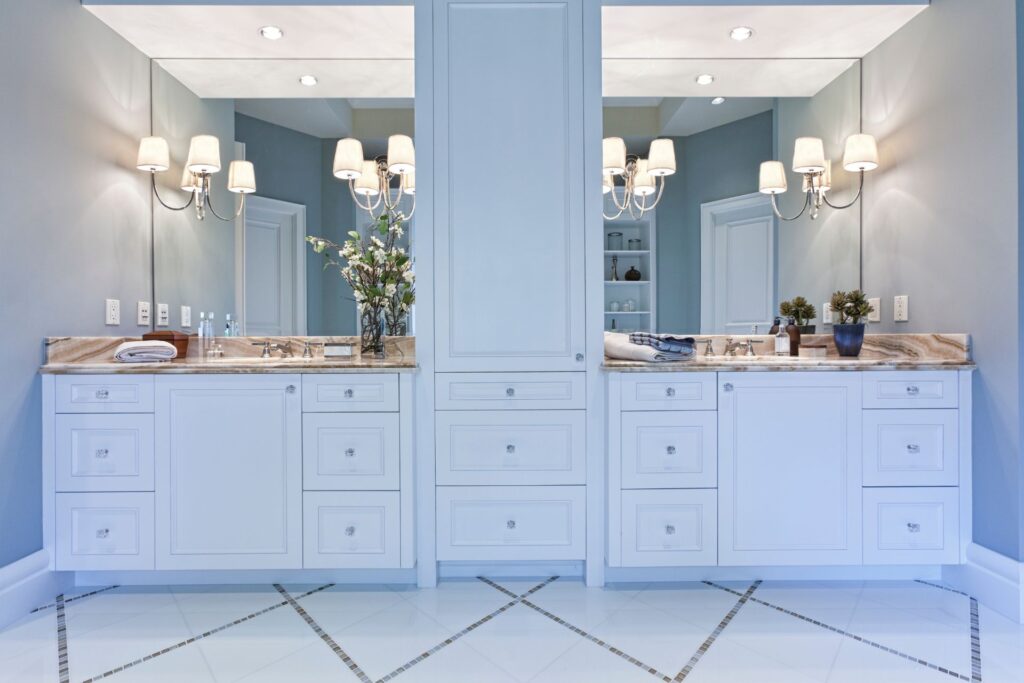
Average Cost Breakdown
When planning to install a bathroom vanity in New Zealand, it’s essential to understand the associated costs. This section breaks down the average expenses you can expect, helping you budget effectively and avoid unexpected surprises.
Basic Cost Range in NZ
The cost of a bathroom vanity in New Zealand can vary significantly based on quality, size, and design. Here’s a general price range to guide your expectations:
- Low-End Vanities: If you’re on a tight budget, low-end vanities typically range from NZD 300 to NZD 700. These vanities often come in standard sizes and materials, offering basic functionality without the bells and whistles.
- Mid-Range Vanities: For a balance between quality and cost, mid-range vanities usually cost between NZD 800 and NZD 1,500. These options often include better materials, such as solid wood or quality composites, and might feature more stylish designs and additional storage options.
- High-End Vanities: If you’re aiming for a luxury finish, high-end vanities can range from NZD 1,600 to NZD 3,000 or more. These vanities often include premium materials like natural stone or custom finishes and are available in a wide array of unique designs tailored to your taste.
Labor Costs
Labor is a significant component of the overall installation cost. Here’s what you can expect to pay for professional services in New Zealand:
- Plumber: Installing a vanity often requires the expertise of a plumber, especially if plumbing needs to be moved or adjusted. On average, plumbers in New Zealand charge between NZD 90 to NZD 150 per hour. The total cost will depend on the complexity of the job and the time required to complete it.
- Carpenter: If your vanity installation involves custom cabinetry or structural modifications, a carpenter may be necessary. Carpenters in New Zealand typically charge around NZD 60 to NZD 120 per hour. The final cost will again depend on the scope of the work.
Additional Expenses
Beyond the vanity and labor costs, there are other expenses to consider that can impact your budget:
- Materials: Depending on your installation, you might need additional materials like sealants, adhesives, or plumbing components. These materials can add an extra NZD 50 to NZD 200 to your total cost.
- Hardware: If your vanity doesn’t include handles, knobs, or taps, purchasing these separately can range from NZD 20 to NZD 200, depending on the quality and style you choose.
- Unforeseen Modifications: During installation, unforeseen issues like outdated plumbing, uneven walls, or flooring problems might arise, requiring additional work. It’s wise to budget an extra 10-15% of the total project cost to cover these contingencies.
By understanding these cost components, you can better plan your bathroom renovation project and make informed decisions that align with your budget and design aspirations. Proper planning will ensure that your new vanity is both functional and stylish, adding value to your home without breaking the bank.

How To Choose The Right Vanity For Your Bathroom
When it comes to selecting the perfect vanity for your bathroom, there are several crucial factors to consider. A well-chosen vanity not only enhances the aesthetic appeal of your bathroom but also contributes significantly to its functionality. Below, we dive into the key steps to help you make an informed decision that balances style, practicality, and budget.
Assessing Space and Layout
The first step in choosing the right vanity is to assess the available space and layout of your bathroom. Begin by taking precise measurements of the area where the vanity will be installed. Measure the width, depth, and height, and consider any obstructions like doors, windows, or plumbing that might limit your options.
Understanding the size of your space will guide you in selecting a vanity that fits comfortably without overcrowding the room. For smaller bathrooms, consider compact or corner vanities that make the most of limited space. In larger bathrooms, a double vanity might be a luxurious and practical option, providing ample storage and counter space.
When assessing the layout, think about how the vanity will function within the space. Ensure there’s enough clearance for doors and drawers to open fully without hitting other fixtures. The location of plumbing lines is also a critical consideration, as this will affect the placement and style of the vanity you choose.
Matching Vanity to Bathroom Style
Your bathroom vanity should seamlessly integrate with the overall style of your bathroom. Whether you’re working with an existing design or planning a full renovation, the vanity plays a key role in setting the tone of the space.
For a traditional bathroom, a vanity with ornate details, wood finishes, and classic hardware might be the best fit. On the other hand, if your bathroom has a modern or minimalist vibe, consider a sleek vanity with clean lines, a floating design, or contemporary materials like glass or metal.
The color and finish of the vanity are equally important. For example, a white or light-colored vanity can brighten up a small space, while darker tones can add drama and sophistication to a larger bathroom. If your bathroom features natural elements like stone or wood, consider a vanity that complements these textures to create a cohesive look.
Don’t forget to consider the countertop material as well. Quartz, marble, and granite are popular choices that offer durability and aesthetic appeal. The countertop should harmonize with other elements in your bathroom, such as the tiles, wall color, and fixtures.
Budget Planning
Budget is a significant factor when choosing a bathroom vanity, and it’s important to allocate your funds wisely to get the best return on investment. Start by setting a realistic budget that takes into account all aspects of the vanity purchase, including the cost of the vanity itself, installation fees, and any additional expenses like plumbing adjustments or new fixtures.
Vanities come in a wide range of prices, from budget-friendly options to high-end custom designs. While it’s tempting to go for the most affordable option, it’s important to consider the long-term value. A well-made vanity with quality materials might have a higher upfront cost, but it can save you money in the long run by offering better durability and longevity.
When budgeting, also consider the accessories that will complement your vanity, such as mirrors, lighting, and storage solutions. These elements can significantly impact the functionality and aesthetics of your bathroom, so it’s wise to include them in your budget planning.
If you’re renovating your entire bathroom, it may be worth splurging on a statement vanity that serves as the focal point of the space. However, if you’re simply updating the vanity, look for options that offer a balance of style and affordability.
In conclusion, choosing the right vanity for your bathroom involves careful consideration of space, style, and budget. By assessing your bathroom’s layout, matching the vanity to your existing decor, and planning your budget effectively, you can select a vanity that enhances both the functionality and beauty of your bathroom.
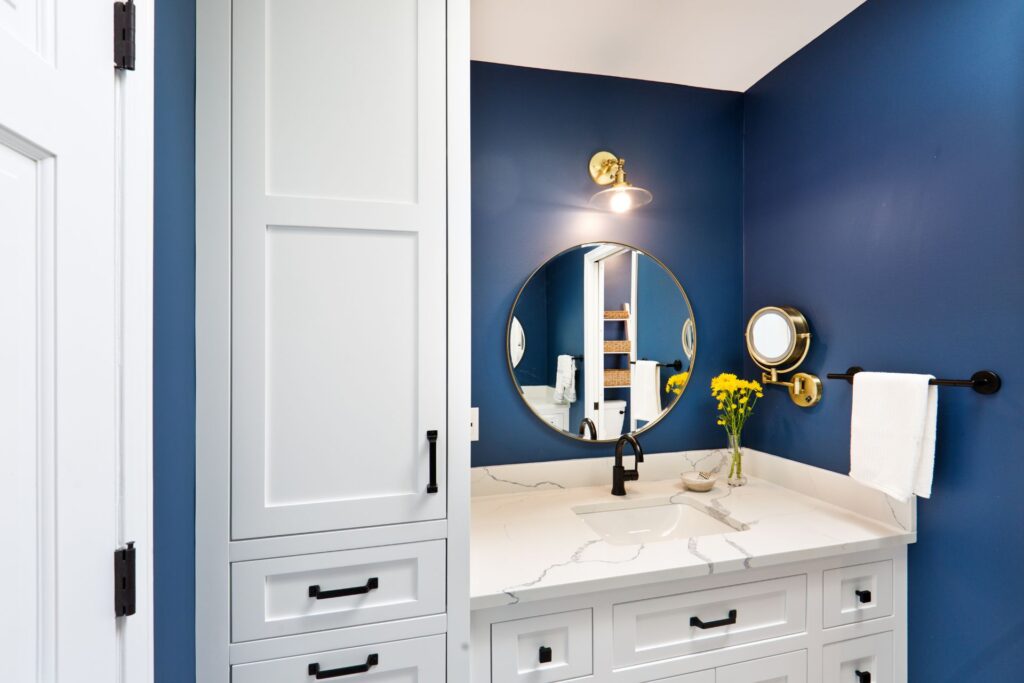
DIY Vs. Professional Installation
When it comes to home improvement or renovation projects, one of the biggest decisions you’ll face is whether to take the DIY route or hire a professional. Both options have their pros and cons, and understanding when to consider each can make a significant difference in the success of your project. Here’s a detailed breakdown to help you make the best choice.
When to Consider DIY
DIY (Do It Yourself) projects can be incredibly rewarding, not just for your wallet but also for the sense of accomplishment they bring. Here are some scenarios where DIY is both feasible and beneficial:
1. Simple Projects: If your project is straightforward and doesn’t require specialized skills, DIY might be the perfect choice. Tasks like painting a room, assembling furniture, or installing shelves are generally easy to manage with basic tools and a little patience.
2. Budget-Friendly: DIY can save you a considerable amount of money, especially on labor costs. If you’re working within a tight budget, taking on certain tasks yourself can stretch your funds further, allowing you to allocate resources to other aspects of your project.
3. Learning Opportunity: For those who enjoy learning new skills, DIY can be an educational experience. Tackling a home project on your own gives you the chance to develop hands-on skills that you can apply to future projects.
4. Time Availability: If you have the time to dedicate to your project, DIY might be a good fit. Some projects, though simple, can be time-consuming, so it’s important to assess whether you can commit the necessary hours to complete the task properly.
Benefits of Hiring Professionals
While DIY has its advantages, there are situations where hiring a professional is the wiser choice. Here’s why professional installation can save you time, money, and stress:
1. Expertise and Experience: Professionals bring a wealth of knowledge and experience to the table. They’ve likely completed numerous projects similar to yours and understand the intricacies involved. This expertise can ensure that the job is done right the first time, reducing the likelihood of mistakes that could be costly to fix.
2. Time-Saving: What might take you days or even weeks to complete, a professional can often finish in a fraction of the time. Their efficiency comes from experience and access to specialized tools and resources, allowing them to work faster and more effectively.
3. Quality Assurance: Hiring a professional often means peace of mind. Many contractors guarantee their work, so if something goes wrong, they’ll come back to fix it. This assurance can be invaluable, especially for complex projects where mistakes could lead to significant issues down the line.
4. Safety Considerations: Certain projects involve risks, such as electrical work, plumbing, or structural changes. Professionals are trained to handle these safely, adhering to local codes and regulations, which DIYers might overlook or be unaware of.
Finding and Choosing Contractors in NZ
If you’ve decided that hiring a professional is the best route for your project, the next step is finding the right contractor. Here are some tips to ensure you choose a reliable and skilled professional in New Zealand:
1. Research and Referrals: Start by asking friends, family, or neighbors for recommendations. Personal referrals are often the most trustworthy. Additionally, online reviews and ratings on platforms like Google, Trade Me, or Builderscrack can provide insight into a contractor’s reputation and quality of work.
2. Check Credentials: Ensure that any contractor you consider is licensed and insured. In New Zealand, certain types of work require specific qualifications, so it’s important to verify that the contractor holds the necessary certifications for your project.
3. Get Multiple Quotes: Don’t settle for the first quote you receive. Instead, get estimates from at least three contractors. This will give you a better idea of the going rate and help you avoid overpriced services.
4. Ask for References: A reputable contractor should be able to provide references from previous clients. Contact these references to ask about their experience, the quality of work, and whether the project was completed on time and within budget.
5. Review Contracts Carefully: Once you’ve selected a contractor, carefully review the contract before signing. Make sure it outlines all aspects of the project, including the scope of work, timeline, costs, and payment schedule. If anything is unclear, don’t hesitate to ask for clarification.
By carefully considering these factors, you can make an informed decision about whether to tackle your project yourself or bring in a professional. Either way, thorough planning and preparation are key to ensuring a successful outcome.
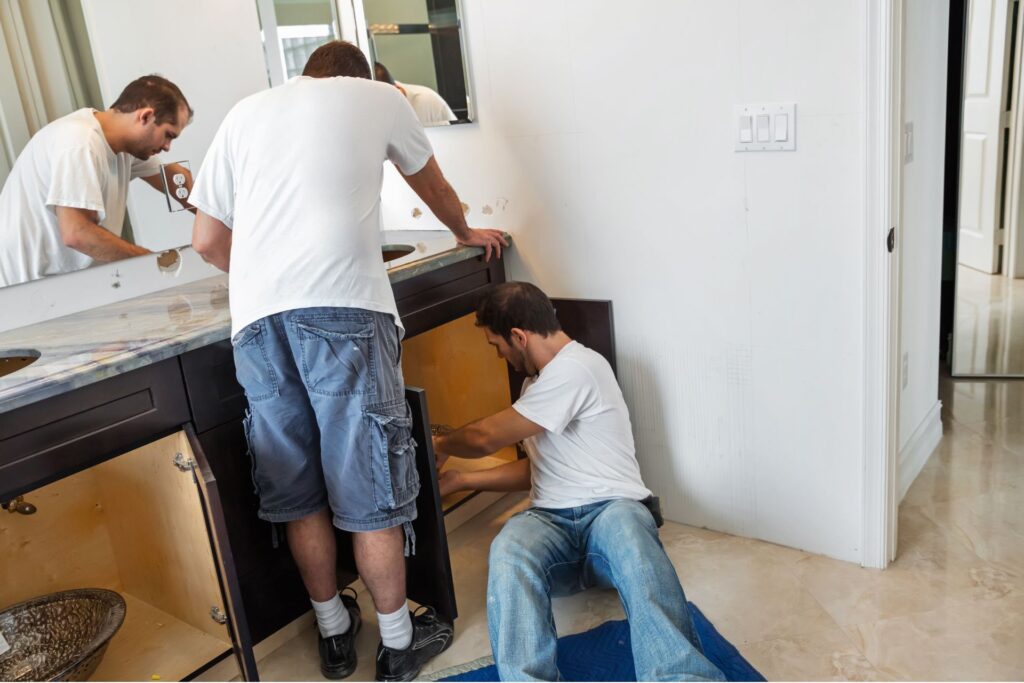
Saving Money On Your Bathroom Vanity Installation
Updating your bathroom with a new vanity can significantly enhance the space’s appearance and functionality. However, the costs associated with purchasing and installing a vanity can add up quickly. Fortunately, there are several ways to keep these expenses in check without compromising on quality or style. In this section, we’ll explore budget-friendly vanity options, offer cost-saving tips for installation, and provide maintenance advice to ensure your vanity stays in great shape for years to come.
Budget-Friendly Vanity Options
Finding the perfect vanity at an affordable price is possible with a little bit of research and creativity. Start by exploring a variety of retailers, both online and in-store. Big-box stores often carry a range of vanities at different price points, and you might be surprised at the quality available in their more budget-conscious lines. Additionally, consider looking at discount home improvement stores or even local classifieds where people sell gently used or surplus items. Websites like Craigslist, Facebook Marketplace, and even eBay can be gold mines for finding vanities that fit your budget.
Another option to consider is purchasing a basic vanity and upgrading it with more unique or high-end hardware. New knobs, pulls, and faucets can dramatically change the look of a vanity without the need to spend on a custom or premium piece. You might also explore semi-custom options where you can select the vanity base and then choose different countertops, sinks, and fixtures based on your budget.
Cost-Saving Tips for Installation
Once you’ve selected your vanity, the next step is installation. This is where costs can really start to add up, especially if you’re hiring professionals to do the work. However, there are ways to minimize these expenses. First, if you’re handy or have some DIY experience, consider tackling the installation yourself. Many vanities are designed for relatively easy installation, and with the help of online tutorials, you might find that you can handle the project with a little patience and the right tools.
If DIY isn’t your style, or if the project is too complex, you can still save on labor costs by getting multiple quotes from contractors. Don’t just go with the first estimate—shop around and compare services to find the best deal. You can also save money by preparing the area before the contractor arrives, such as by removing the old vanity, clearing the space, or even doing some of the finishing touches yourself, like painting or caulking.
Consider timing your installation during a slower season for contractors, as you may be able to negotiate a better rate when they aren’t as busy. Lastly, try to purchase all materials yourself rather than through your contractor, as this can give you more control over costs and prevent markups.
Maintenance Tips to Prolong Vanity Life
After investing in a new bathroom vanity, it’s important to keep it in good condition to avoid costly repairs or replacements down the line. Regular maintenance can significantly extend the life of your vanity, preserving its appearance and functionality. Start with routine cleaning—use non-abrasive cleaners that are appropriate for the materials your vanity is made of. For example, if you have a marble or granite countertop, use a stone-specific cleaner to prevent damage.
Additionally, keep an eye on moisture levels in your bathroom. Excess moisture can lead to warping, mold, and other issues that can deteriorate your vanity over time. Ensure your bathroom is well-ventilated by using exhaust fans during and after showers. Wipe down surfaces regularly to prevent water from pooling, particularly around the sink and faucet area.
It’s also a good idea to periodically check the vanity’s hardware and plumbing connections. Tighten loose screws, adjust misaligned doors or drawers, and inspect for any leaks under the sink. Addressing small issues promptly can prevent them from becoming larger, more expensive problems in the future.
By following these budget-friendly and maintenance-focused strategies, you can enjoy a stylish and functional bathroom vanity without breaking the bank.
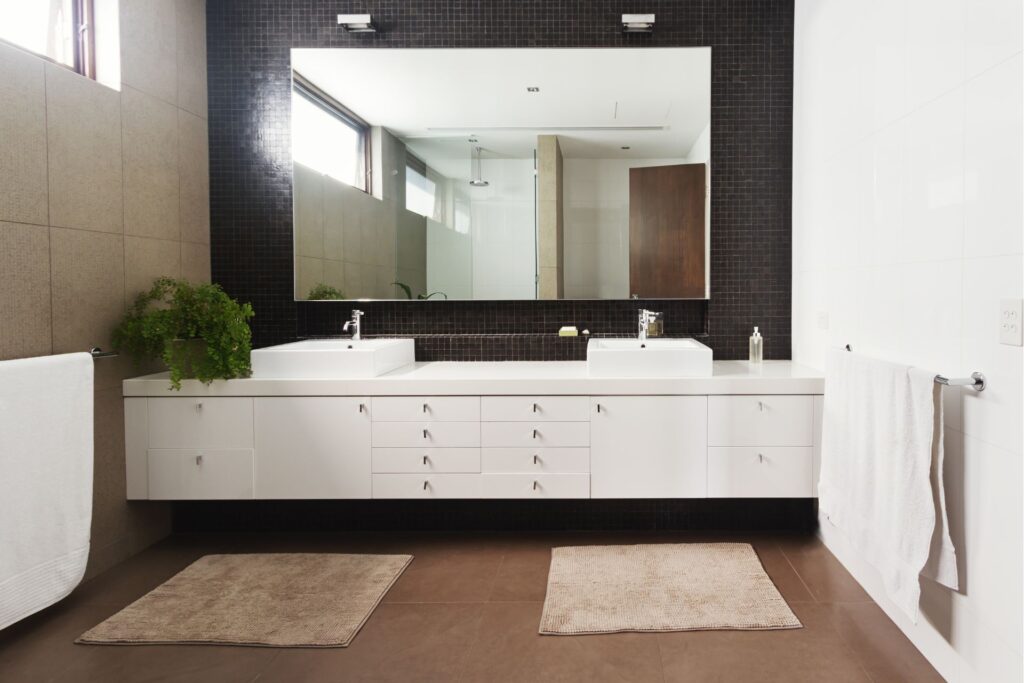
Case Studies And Real-Life Examples
When it comes to bathroom renovations, nothing speaks louder than real-life examples. Here, we’ll dive into two distinct case studies that showcase the range of possibilities—whether you’re on a tight budget or aiming for luxury. By examining these examples, you’ll gain a clear understanding of the costs, steps, and benefits involved in different types of bathroom vanity installations.
Example 1: Low-Cost Installation in a Small Bathroom
Breakdown of Costs and Steps Involved
Imagine you have a small bathroom that desperately needs an upgrade, but you’re working with a limited budget. A low-cost vanity installation can breathe new life into your space without breaking the bank. Here’s how this process unfolds:
1. Planning and Budgeting: The first step is to establish a realistic budget. For a small bathroom, you can expect to spend anywhere from $200 to $600 on a basic vanity unit. This price range typically includes a simple, yet stylish, vanity cabinet, sink, and countertop.
2. Selecting the Vanity: Once you have your budget, the next step is to choose a vanity that suits your space. For a small bathroom, a compact vanity with storage can be a practical choice. Look for materials like laminate or MDF, which offer durability at a lower cost.
3. Prepping the Space: Before installation, ensure the area is ready. This might involve removing the old vanity, patching up any wall damage, and ensuring plumbing connections are in good condition.
4. Installation: If you’re handy, this is a task you can potentially tackle yourself. However, if you’re not comfortable with DIY, hiring a professional might add around $100 to $300 to your budget. The installation process includes positioning the vanity, securing it to the wall, and connecting the plumbing.
5. Finishing Touches: To complete the look, consider inexpensive upgrades like a new mirror, fresh paint, or updated hardware. These small touches can enhance the overall appearance without adding much to your budget.
By opting for a budget-friendly vanity installation, you can achieve a fresh, modern look in your bathroom while keeping costs under control. This approach is ideal for homeowners looking to update their space without making a significant financial investment.
Example 2: Luxury Vanity Installation in a Master Bathroom
Overview of Investment and Benefits
On the other end of the spectrum, let’s explore the transformation of a master bathroom with the installation of a luxury vanity. This example highlights how investing in high-end materials and professional craftsmanship can significantly enhance both the functionality and aesthetic appeal of your space.
1. Design and Planning: A luxury vanity installation begins with a detailed design plan. This often involves consulting with a designer to create a custom vanity that perfectly fits the dimensions and style of your master bathroom. The design phase may include selecting premium materials such as marble, quartz, or solid wood, which can drive the cost into the $2,000 to $5,000 range or more, depending on your choices.
2. Custom Fabrication: Once the design is finalized, the vanity is custom-fabricated to your specifications. This ensures a perfect fit and allows for personalized features such as double sinks, ample storage, and high-end finishes. The cost of custom fabrication can vary, but it is a key factor in achieving a unique, tailored look.
3. Professional Installation: A luxury vanity installation requires expert installation to ensure everything is flawlessly executed. Professional installation may involve not just setting the vanity in place, but also integrating additional elements like under-cabinet lighting, custom backsplashes, and premium fixtures. Installation costs for a luxury vanity can range from $500 to $1,500 or more, depending on the complexity of the project.
4. Enhanced Features and Benefits: Beyond aesthetics, a luxury vanity brings functional benefits. High-end materials are not only beautiful but also durable and resistant to wear. Features like soft-close drawers, integrated lighting, and custom storage solutions enhance the usability of the bathroom, making it a true retreat within your home.
Investing in a luxury vanity for your master bathroom is about more than just looks—it’s about creating a space that reflects your style and meets your needs. The initial investment may be substantial, but the long-term benefits in terms of both satisfaction and home value can be significant.
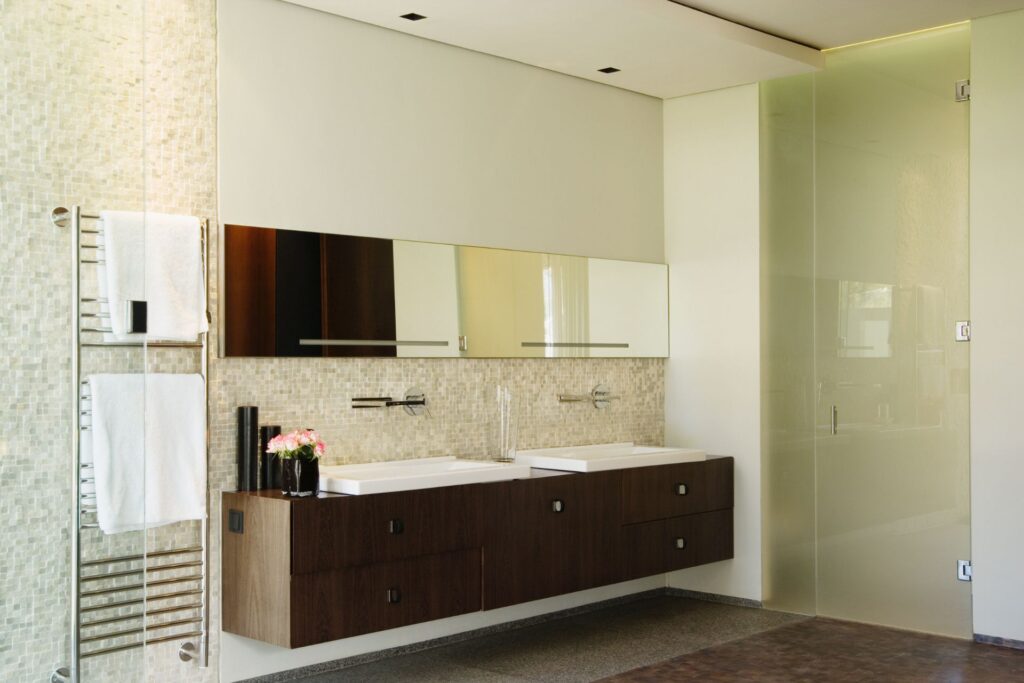
FAQs: About Average Cost To Install A Bathroom Vanity NZ
What factors affect the cost of installing a bathroom vanity in NZ?
The cost can vary based on the size and type of the vanity, the materials used, the complexity of the installation, and whether new plumbing is needed.
How much does labor contribute to the overall cost of installing a bathroom vanity?
Labor costs typically range from NZD $50 to $100 per hour, making up a significant portion of the overall cost, especially if extensive plumbing or customization is required.
Can I install a bathroom vanity myself to save money?
DIY installation can save on labor costs but is only recommended if you have the necessary skills and tools. Incorrect installation can lead to more expenses due to potential damages.
What is the price range for low-end vs. high-end bathroom vanities in NZ?
Low-end vanities can start from as little as NZD $500, while high-end options can exceed NZD $3,000, depending on the materials and design.
Are there additional costs I should consider when planning for a vanity installation?
Yes, you might incur extra costs for additional materials, plumbing adjustments, and unforeseen complications like structural modifications.
What type of vanity is most cost-effective for a small bathroom?
Freestanding vanities are typically more cost-effective and easier to install, making them suitable for small bathrooms.
How do I choose the right vanity for my bathroom?
Consider the size of your bathroom, your storage needs, and the existing decor. It’s also important to set a budget to help narrow down your options.
What are some common mistakes to avoid when installing a new bathroom vanity?
Common mistakes include neglecting to measure the space accurately, ignoring existing plumbing configurations, and choosing materials that don’t handle humidity well.
How long does it typically take to install a bathroom vanity in NZ?
The installation can take anywhere from a few hours to a full day, depending on the complexity and whether existing fixtures need to be removed.
Where can I find affordable bathroom vanities in New Zealand?
Check local home improvement stores, online retailers, and second-hand markets for the best deals. Sales and clearances can also provide good opportunities to save.
Conclusion
In conclusion, when considering the costs and factors involved in installing a bathroom vanity in New Zealand, it’s important to recap the key points discussed, including the variety of styles available, the influence of material and craftsmanship on pricing, and the balance between budget and long-term practicality. Whether you prioritize aesthetics, durability, or cost, weighing these options carefully will ensure that your choice aligns with your renovation goals. To get started on transforming your bathroom, consider consulting with local experts or visiting showrooms where you can explore a wide range of vanities and gain valuable insights tailored to your specific needs.
About the Author:
Mike Veail is a recognized digital marketing expert with over 6 years of experience in helping tradespeople and small businesses thrive online. A former quantity surveyor, Mike combines deep industry knowledge with hands-on expertise in SEO and Google Ads. His marketing strategies are tailored to the specific needs of the trades sector, helping businesses increase visibility and generate more leads through proven, ethical methods.
Mike has successfully partnered with numerous companies, establishing a track record of delivering measurable results. His work has been featured across various platforms that showcase his expertise in lead generation and online marketing for the trades sector.
Learn more about Mike's experience and services at https://theleadguy.online or follow him on social media:
